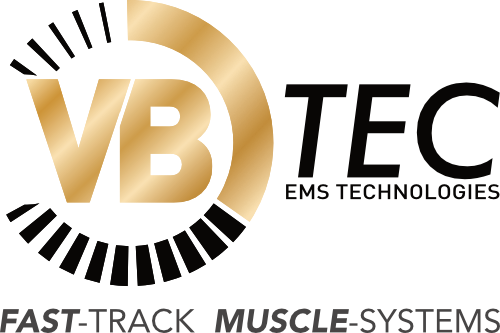When it comes to training, most people believe they are working all their muscles, but the truth is, traditional workouts typically activate only around 65% of your available muscle fibers. That’s not because your body is lazy; it’s due to how your nervous system recruits motor units and how conventional exercises stimulate muscles. Fortunately, modern technology like EMS (Electrical Muscle Stimulation) is changing the way we train, allowing near-total muscle activation safely and efficiently.
As someone who has spent most of my life studying muscle science and leading the development of the first wireless EMS systems, I can tell you that combining traditional training with EMS can unlock a new level of muscle engagement, recovery, and performance.
Why You’re Only Using ~65% of Your Muscles
Understanding Motor Unit Recruitment
Muscles are made of motor units, each consisting of a nerve and the muscle fibers it controls. During traditional training:
Your body recruits motor units gradually, starting with smaller units first.
High-threshold units, which are responsible for the strongest contractions, only activate during extreme effort.
Fatigue, improper technique, or lack of intensity often means some muscle fibers never fire.
This is why even consistent training rarely activates 100% of muscle fibers.
Limitations of Traditional Training
Even with strength training or high-intensity workouts:
Certain muscles are hard to isolate completely.
Some fibers are underutilized due to neuromuscular inefficiency.
Recovery and adaptation can limit the frequency and intensity of workouts.
In short, your muscles are capable of far more than what traditional workouts achieve, this is where EMS comes in.
How Muscles Build in Traditional Training
Hypertrophy and Strength Adaptation
Traditional strength training builds muscle through:
Mechanical tension: Lifting weights stretches and contracts fibers under load.
Metabolic stress: Repetitions create microtears and metabolic byproducts that trigger growth.
Muscle damage and repair: Tiny tears stimulate protein synthesis and hypertrophy.

However, these mechanisms are limited by how many fibers are actually recruited in each session.
Neuromuscular Adaptation
Muscle growth isn’t just about size, it’s about control and coordination:
Training improves motor unit synchronization.
Your body becomes more efficient at activating fibers it already uses.
Fibers that rarely engage remain underdeveloped.
Even elite athletes still leave a significant portion of their potential untapped, often around 35% of their muscle fibers.
What EMS Does Differently
Electrical Muscle Stimulation (EMS) sends small electrical impulses to muscles, forcing them to contract. Unlike voluntary contractions:
EMS can target nearly all fibers simultaneously, including high-threshold motor units.
It bypasses natural recruitment order, activating fibers traditional workouts often miss.
When combined with traditional exercise, EMS acts as a muscle multiplier, accelerating results.
Using a modern EMS suit, these impulses are applied across major muscle groups simultaneously, creating a full-body contraction that’s efficient, safe, and measurable.
Combining EMS with Traditional Training
The real magic happens when EMS complements standard workouts:
Amplified activation: Every rep recruits more fibers.
Time efficiency: A 20-minute EMS session can be equivalent to 90-120 minutes of conventional training.
Enhanced recovery: EMS increases blood flow and reduces delayed onset muscle soreness (DOMS).
Balanced development: Muscles that are normally hard to engage, like inner thighs or lower back, get trained effectively.
For example, a traditional squat might only recruit ~60-70% of thigh fibers, but adding EMS can bring this close to full activation, boosting strength, endurance, and aesthetics.
Does EMS Actually Build Muscle?
Yes, EMS has been scientifically proven to increase muscle strength and mass:
Studies show increased muscle cross-sectional area after 8-12 weeks of EMS training.
EMS combined with voluntary contractions yields superior gains compared to traditional workouts alone.
Regular EMS sessions help maintain muscle during injury recovery or inactivity.
EMS doesn’t replace traditional training, it enhances it, allowing you to tap into fibers you otherwise wouldn’t.

Is EMS Good for Muscle Recovery?
Absolutely. EMS is a powerful tool for recovery:
Increases circulation, promoting nutrient delivery and waste removal.
Reduces muscle stiffness and soreness post-workout.
Can be applied at lower intensities purely for recovery, without causing fatigue.
Professional athletes often use EMS daily for recovery and injury prevention, while still training traditionally for strength and skill.
Can I Use EMS Every Day?
Yes, but it depends on the intensity:
Low to moderate intensity EMS is safe for daily use, primarily for recovery.
High-intensity EMS, especially when combined with strength training, should be limited to 2-3 times per week to avoid overtraining.
Personalization via a wireless EMS suit allows monitoring of intensity and session duration for safety.
How Long Does EMS Take to Build Muscle?
Muscle growth depends on frequency, intensity, and consistency:
Visible strength gains are often reported after 6-8 weeks of regular EMS training.
Full-body EMS sessions 2-3 times per week, combined with standard workouts, maximize results.
Consistency matters more than duration; even 20-minute EMS sessions can have a major impact.
What Is 20 Minutes of EMS Training Equivalent To?
A properly calibrated EMS session:
Activates nearly all muscle fibers simultaneously.
Can equal 90-120 minutes of traditional resistance training in terms of fiber recruitment.
Offers time-efficient hypertrophy and endurance training without overloading joints.
This makes EMS ideal for busy professionals, athletes, or anyone seeking efficient results without sacrificing quality.
Does EMS Muscle Training Actually Work?
Yes, consistently:
EMS improves muscle strength, tone, and endurance.
Clinical studies demonstrate enhanced motor unit recruitment compared to voluntary contractions alone.
When integrated with traditional training, EMS accelerates adaptation, helping you reach your full muscular potential.
Can Electrical Muscle Stimulation Help You Build Muscle?
In short: yes, safely and efficiently. Benefits include:
High muscle fiber recruitment that is impossible with traditional training alone.
Targeted stimulation of hard-to-reach areas.
Improved recovery, reducing downtime between workouts.
Support for rehabilitation in injuries or post-surgery muscle loss.
Using a wireless EMS suit, these benefits are available to both professional athletes and everyday users.
The Future of Training: EMS Suits and Full Muscle Activation
Modern EMS suits represent a revolution in fitness and rehabilitation:
Dry electrodes and wireless design allow freedom of movement.
Full-body coverage ensures no fiber is left behind.
App-controlled intensity provides real-time customization.
Hygienic and safe for personal or professional use.
With EMS, the dream of activating nearly 100% of your muscles is no longer theoretical, it’s achievable. Combining EMS with traditional training gives you:
Faster strength gains
More balanced muscle development
Reduced risk of injury
Time-efficient, high-impact workouts
FAQs
Q: Does EMS actually build muscle?
A: Yes, studies show EMS can increase muscle strength and size, especially when combined with traditional exercise.
Q: Is EMS good for muscle recovery?
A: Absolutely. EMS improves circulation, reduces soreness, and accelerates recovery post-workout.
Q: Can I use EMS every day?
A: Low-intensity EMS can be used daily for recovery, while high-intensity sessions should be limited to 2-3 times per week, avoid extended or excessive use.
Q: Can electrical muscle stimulation help you build muscle?
A: Yes. EMS recruits fibers that traditional workouts often miss, boosting hypertrophy and strength.
Q: How long does EMS take to build muscle?
A: Visible results usually appear after 6-8 weeks of consistent EMS training combined with traditional workouts.
Q: What is 20 minutes of EMS training equivalent to?
A: Around 90-120 minutes of conventional training in terms of muscle fiber recruitment and stimulation.
Q: Does EMS muscle training actually work?
A: Yes. Clinical research confirms EMS enhances muscle activation, strength, and endurance when used properly.
Don’t Stop at 65% – Unlock Your Full Potential
If you found this guide helpful, you’ll definitely want to explore how EMS impacts not just strength, but also long-term muscle mass and overall health. I break it down in detail here: EMS, Muscle Mass & Health Benefits
And if you’d like to know how Visionbody EMS suits can fit into your personal training, studio, or rehabilitation program, don’t hesitate to Contact Us, my team and I are here to answer your questions and guide you toward the best solution.
References
Vanderthommen, M., & Duchateau, J. (2007). Electrical stimulation as a training tool for muscles: mechanisms and applications. Sports Medicine, 37(3), 183-206. https://pmc.ncbi.nlm.nih.gov/articles/PMC6104107/
Filipovic, A., Kleinöder, H., Dörmann, U., & Mester, J. (2011). Electromyostimulation – A Systematic Review of the Current Literature. Sports Medicine, 41(11), 901-923.
Babault, N., Pousson, M., Ballay, Y., & Van Hoecke, J. (2007). Neuromuscular adaptations to electrostimulation resistance training. Journal of Strength and Conditioning Research, 21(2), 431-437.









